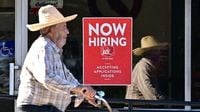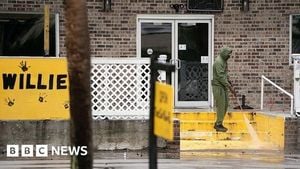On September 23, 2025, a routine truck inspection on Interstate 40 in Oklahoma took a dramatic turn when the Oklahoma Highway Patrol encountered Anmol Anmol—a truck driver whose case is now at the center of a heated national debate over immigration, public safety, and the future of America’s workforce. According to the Department of Homeland Security (DHS), Anmol, an Indian national, was found to be residing in the United States illegally and was promptly taken into custody by Immigration and Customs Enforcement (ICE). His arrest is just one flashpoint in an intensifying crackdown on undocumented immigrants, a campaign that’s sending ripples through government agencies, state bureaucracies, and the industries that rely on immigrant labor.
The facts, as laid out by ICE and reported by several outlets including India Blooms News Service and Hindustan Times, are striking. Anmol entered the U.S. unlawfully in 2023 and, after being released by the Biden administration, managed to obtain a commercial driver’s license (CDL) from New York in April 2024. The license, which is valid until May 2028, even bore the “REAL ID” star, signifying compliance with federal identity requirements. But what truly raised eyebrows was the name displayed on the license: “NO NAME GIVEN Anmol.”
Assistant Secretary Tricia McLaughlin of DHS didn’t mince words in her criticism of New York’s licensing process. “Allowing illegal aliens to obtain commercial driver’s licenses to operate 18-wheelers and transport hazardous materials on America’s roads is reckless and incredibly dangerous to public safety,” she said, as quoted by India Blooms News Service. She went further, charging that, “New York is not only failing to check if applicants applying to drive 18-wheelers are U.S. citizens but even failing to obtain the full legal names of individuals they are issuing commercial drivers’ licenses to.”
McLaughlin’s concerns were echoed by DHS officials, who asserted that the department is now working closely with state and local partners to ensure that illegal immigrant drivers are kept off American highways. The stakes, they argue, are high. In her words, “Thanks to the successful 287g partnership of ICE and Oklahoma Highway Patrol, Anmol Anmol is no longer posing a threat to drivers.”
But the story doesn’t end there. The New York Department of Motor Vehicles (DMV) quickly responded, pushing back against the federal criticism. According to a DMV official, as reported by Fox News and Hindustan Times, Anmol had “lawful status in the U.S. through a federal employment authorization issued in March 2024” and was given a license “consistent with federal guidelines.” The DMV also pointed out that it is “not uncommon for individuals from other countries to have only one name” and that all proper procedures, including identity verification through federally issued documentation, were followed. “This commercial driver’s license was issued in accordance with all proper procedures, including verification of the individual’s identity through federally issued documentation,” the official insisted.
This back-and-forth reflects a broader national debate about how states should handle the licensing of immigrants, especially those whose legal status is in dispute. The incident comes on the heels of another high-profile case: just two months earlier, Harjinder Singh, another Indian national living unlawfully in the U.S., was indicted on three counts of vehicular homicide in Florida. Singh, authorities say, held a California CDL despite failing basic traffic law and English language examinations. For critics, these cases are evidence that the current system is failing to protect public safety. For others, they highlight the complexities—and sometimes contradictions—of America’s patchwork approach to immigration and labor.
Meanwhile, the crackdown on illegal immigration is having far-reaching effects beyond the world of truck stops and driver’s licenses. On October 2, 2025, the U.S. Department of Labour issued a warning about the unintended consequences of these aggressive enforcement measures. According to a report by American Prospect and Forbes, the Department cautioned that the “current and imminent labour shortage exacerbated by the near total cessation of the inflow of illegal aliens, increased enforcement of existing immigration law, and global competitiveness pressures... presents a sufficient risk of supply shock-induced food shortages to justify immediate implementation.”
The Labour Department’s statement was blunt: without prompt action, agricultural employers would face “severe labour shortages, resulting in disruption to food production, higher prices, and reduced access for U.S. consumers, particularly to fresh fruit and vegetables.” The announcement also referenced a new rule under the H-2A visa program, which would lower the minimum wage for agricultural workers—a move designed to attract more labor but one that critics say could exacerbate worker shortages.
Studies cited by the Department show just how delicate the balance is: a 10% drop in the agricultural workforce could lead to a 4.2% decline in fruit and vegetable production and a 5.5% decrease in farm revenue. The numbers are stark—nearly 19% of the U.S. labor force is foreign-born, and a whopping 38% of these workers are employed in farming, fishing, and forestry. The Trump administration’s push to make the agricultural workforce “100% American,” as Agriculture Secretary Brooke Rollins has vowed, faces a steep uphill battle.
ICE’s own data underscores the scale of the current crackdown. During the first 100 days of President Trump’s second term, ICE arrested 66,463 illegal aliens and removed 65,682, including thousands with criminal records. “During President Trump’s first 100 days, ICE alone has arrested over 65,000 illegal aliens—including 2,288 gang members from Tren de Aragua, MS-13, 18th Street and other gangs. Additionally, 1,329 were accused or convicted of sex offences, and 498 were accused or convicted of murder,” said ICE acting Director Todd M. Lyons in an official statement.
Yet, as the Labour Department pointed out, the idea that American workers will simply step in to fill the gap left by departing immigrants is, at best, optimistic. “The Department does not believe American workers currently unemployed or marginally employed will make themselves readily available in sufficient numbers to replace large numbers of aliens no longer entering the country, voluntarily leaving, or choosing to exit the labour force due to the self-perceived potential for their removal based on their illegal entry and status,” the Department said on October 2.
As the debate rages on, the case of Anmol Anmol stands as a microcosm of the country’s larger struggle to balance security, economic stability, and fairness. While federal authorities insist that public safety must come first, state officials and business leaders warn that the costs of a rigid, one-size-fits-all approach could be felt at the dinner table—and across the economy. The story is still unfolding, but one thing is clear: the intersection of immigration enforcement, labor policy, and public safety is proving to be one of the thorniest issues of the day.




